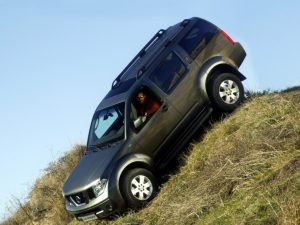difference is palpable
They went horseback. Peugeot e-Legend
 This time, the Peugeot brand did without loud presentations at its home salon, where journalists, it must be admitted, are often driven away by force. Meanwhile, it was Peugeot from the entire bush of French brands that performed at the Paris Motor Show more successfully than the rest. On the one hand, demonstrating a practical 508 SW wagon, which, according to the company’s managers, will account for 60% of model sales in Europe. On the other hand, showing the retroconcept e-Legend, which, according to our observations, has become the most popular car in the cabin among all the “French”. And so that the visitors did not miss, they did not get lost in the large pavilion and certainly found e-Legend, the big lion pointed the way to the new product.
This time, the Peugeot brand did without loud presentations at its home salon, where journalists, it must be admitted, are often driven away by force. Meanwhile, it was Peugeot from the entire bush of French brands that performed at the Paris Motor Show more successfully than the rest. On the one hand, demonstrating a practical 508 SW wagon, which, according to the company’s managers, will account for 60% of model sales in Europe. On the other hand, showing the retroconcept e-Legend, which, according to our observations, has become the most popular car in the cabin among all the “French”. And so that the visitors did not miss, they did not get lost in the large pavilion and certainly found e-Legend, the big lion pointed the way to the new product.
The retro theme in concepts, of course, is not new, but artists do not often turn to a specific model of the brand. Continue reading
Five reasons to love and hate Daewoo Nexia
 In the land of morning freshness, Opel Kadett turned first into Daewoo Racer, then into Cielo (and the car was delivered to a number of markets under the name Lemans and Pointer). In 1994, the car was upgraded to the Nexia name, and in 1995, the Daewoo assembly line in the Uzbek city of Asaka, not far from Andijan, began to work.
In the land of morning freshness, Opel Kadett turned first into Daewoo Racer, then into Cielo (and the car was delivered to a number of markets under the name Lemans and Pointer). In 1994, the car was upgraded to the Nexia name, and in 1995, the Daewoo assembly line in the Uzbek city of Asaka, not far from Andijan, began to work.
In those years, the Daewoo chaebol was actively expanding, and Nexia began to be assembled in Vietnam, Egypt and Romania, and since 1996 it stopped production at all in Korea, leaving it, however, in foreign branches. By the way, from 1996 to 1998, the SKD assembly was also carried out in Russia, at the Krasny Aksai plant in the Rostov region. Still, the main supplier of Nexia to our market was the UzDaewoo plant, where full-cycle production was organized. Continue reading
Five reasons to love and hate the Nissan Pathfinder III
 The name Pathfinder first appeared in the gamut of the Nissan brand in 1985, during the heyday of interest in off-road cars of the “universal” class, combining the permeability and utility of the “professionals” with the comfort of passenger cars. Then the designers of the brand did the same as everyone else: they took the four-wheel drive pickup truck chassis (with independent front suspension and reduction gear in the transmission) and equipped it with a station wagon. Thus was born the SUV with the factory code WD21. In other markets, this car was sold as a Terrano, and the production of this model continued until 1996, when it was replaced by the Pathfinder R50.
The name Pathfinder first appeared in the gamut of the Nissan brand in 1985, during the heyday of interest in off-road cars of the “universal” class, combining the permeability and utility of the “professionals” with the comfort of passenger cars. Then the designers of the brand did the same as everyone else: they took the four-wheel drive pickup truck chassis (with independent front suspension and reduction gear in the transmission) and equipped it with a station wagon. Thus was born the SUV with the factory code WD21. In other markets, this car was sold as a Terrano, and the production of this model continued until 1996, when it was replaced by the Pathfinder R50.
In 1993, a separate, purely European branch, named Terrano II, sprang from this trunk, which, nevertheless, soon sprouted in America under the name Ford Maverick (the car whose exterior was designed by Belgian designer Alain Bloné was developed jointly with the concern Ford) but this is a slightly different story. Continue reading





